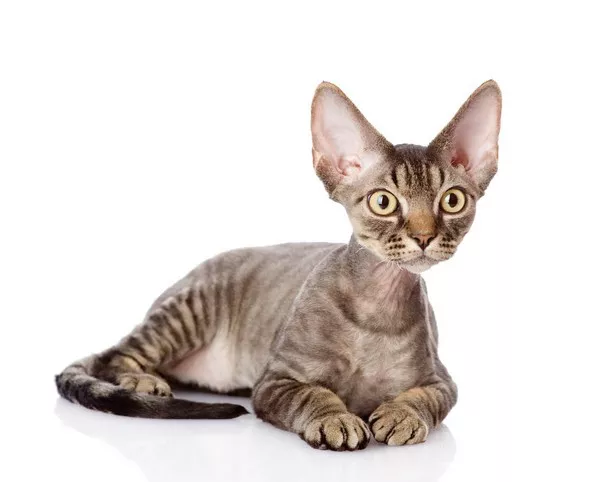Cats, with their enigmatic behaviors and graceful movements, can sometimes face health challenges that are not immediately visible. One such category of health concerns is neurological disorders. In this comprehensive article, we will explore the intricate world of neurological disorders in cats. From understanding the underlying causes to recognizing the symptoms and seeking proper treatment, we aim to provide you with a thorough understanding of these conditions that can affect our feline friends.
1. The Complexity of the Feline Nervous System
The feline nervous system is a marvel of intricate connections that govern a cat’s movements, behaviors, and bodily functions. Comprising the brain, spinal cord, and peripheral nerves, this system plays a vital role in every aspect of a cat’s life. Neurological disorders can arise from various factors, including genetics, trauma, infections, and tumors. Understanding the complexity of the nervous system helps us appreciate the delicate balance that keeps our feline companions in sync with the world around them.
2. Common Neurological Disorders in Cats
Cats, like humans, can experience a range of neurological disorders that manifest in different ways. Some of the most common disorders include:
Epilepsy: This disorder is characterized by recurrent seizures due to abnormal electrical activity in the brain. Seizures can vary from mild twitching to full convulsions, often leaving both cats and their owners bewildered.
Feline Hyperesthesia Syndrome: Cats with this syndrome often display sudden bursts of energy, excessive grooming behaviors, and skin twitching along the back. It’s as if they’re experiencing a sensory overload.
Vestibular Disease: The vestibular system controls a cat’s balance and coordination. When this system is compromised, cats may exhibit head tilting, unsteady movements, and difficulty maintaining balance.
Cerebellar Hypoplasia: Often a result of infections during kittenhood, this disorder affects the cerebellum, responsible for coordination and fine motor skills. Cats with cerebellar hypoplasia may have a wobbly gait and appear “drunk.”
Degenerative Myelopathy: Similar to amyotrophic lateral sclerosis (ALS) in humans, this disorder affects the spinal cord’s nerve cells. It leads to progressive weakness and can eventually result in paralysis.
3. Recognizing the Symptoms
Detecting neurological disorders in cats can be challenging, as the symptoms can vary widely depending on the specific disorder and its severity. Look out for:
Abnormal Gait and Movements: Cats struggling to walk, stumbling, circling, or exhibiting sudden paralysis might be experiencing neurological issues.
Changes in Behavior: If your once-affectionate cat becomes suddenly aggressive or shows confusion, it could indicate a neurological problem.
Seizures: Twitching, convulsions, and altered consciousness during seizures are clear indicators of neurological issues.
Unexplained Pain: Cats may show signs of pain without any apparent injuries due to neurological problems.
4. Seeking Veterinary Care: Diagnosis and Treatment
Detecting and treating neurological disorders in cats requires a skilled veterinarian’s expertise. Diagnosis involves a combination of thorough physical examination, detailed history-taking, and diagnostic tests such as:
Imaging Techniques: Advanced imaging techniques like MRI and CT scans can reveal structural abnormalities in the brain and spinal cord.
Blood Tests and Cerebrospinal Fluid Analysis: These tests help rule out other potential causes and pinpoint the specific neurological disorder.
Treatment varies based on the disorder’s nature and severity. In some cases, medications can manage symptoms, while others might require surgical interventions or physical therapy to improve the cat’s quality of life.
5. Providing Support and Care
Creating a supportive environment for cats with neurological disorders is essential:
Safe and Comfortable Space: Cats with mobility issues need easy access to food, water, and litter boxes. Creating ramps or steps can help them navigate their environment.
Physical and Mental Stimulation: Engaging in interactive play and providing mental stimulation can boost their cognitive function and overall well-being.
Regular Veterinary Check-ups: Monitoring the progression of the disorder and adjusting treatment as needed is crucial for their long-term health.
6. Preventive Measures and Awareness
While some neurological disorders can have a genetic component, responsible breeding practices can help minimize the risk. Raising awareness about these disorders can encourage early detection and intervention, ultimately improving affected cats’ lives.
Conclusion:
Navigating the realm of neurological disorders in cats requires a deep understanding of the feline nervous system, a keen eye for symptoms, and the commitment to provide compassionate care. By recognizing signs of neurological issues, seeking prompt veterinary care, and creating a supportive environment, you can help your feline friend lead a fulfilling life despite their challenges. Remember, your dedication to understanding and addressing your cat’s neurological needs is a testament to the profound bond you share with your furry companion.



























